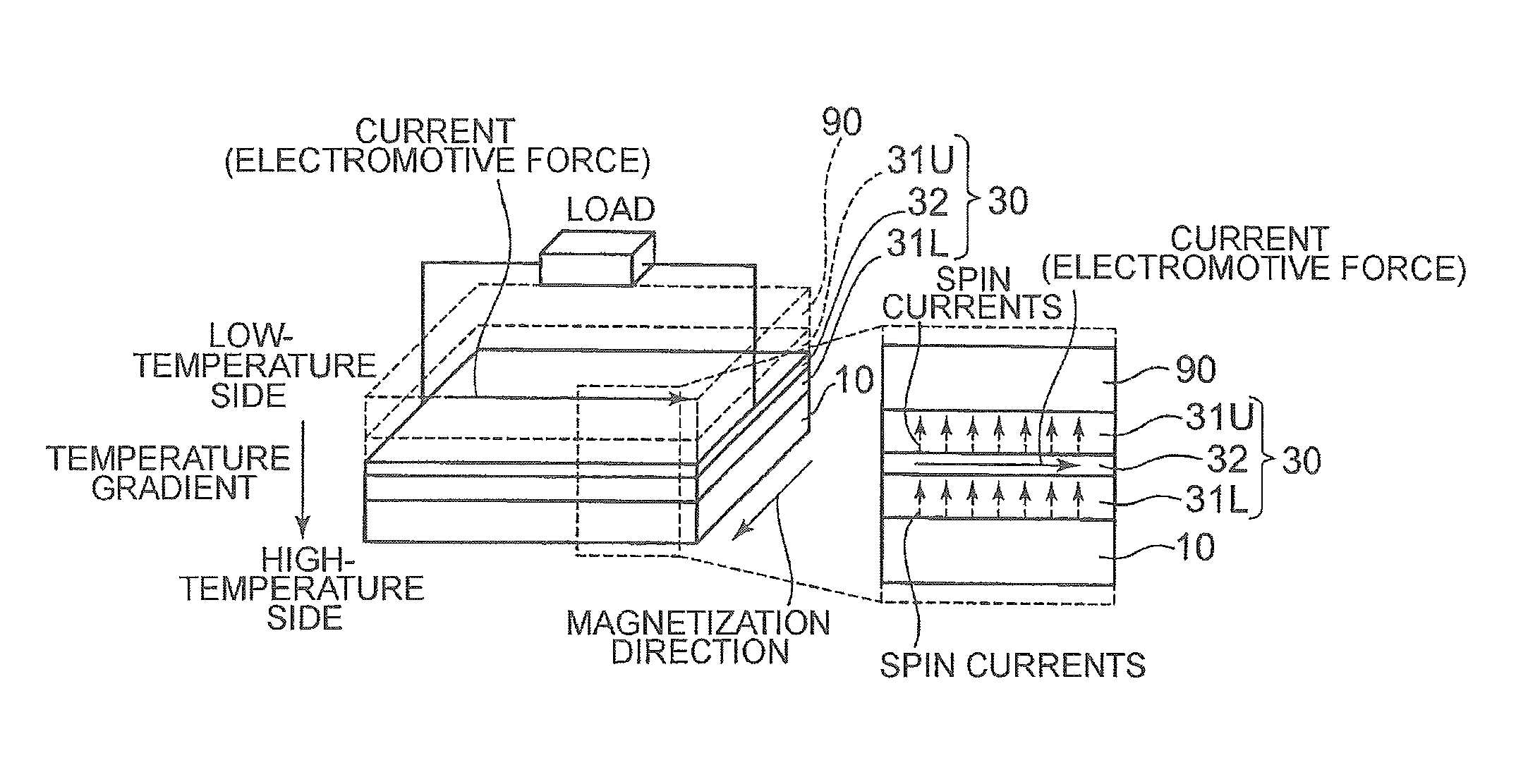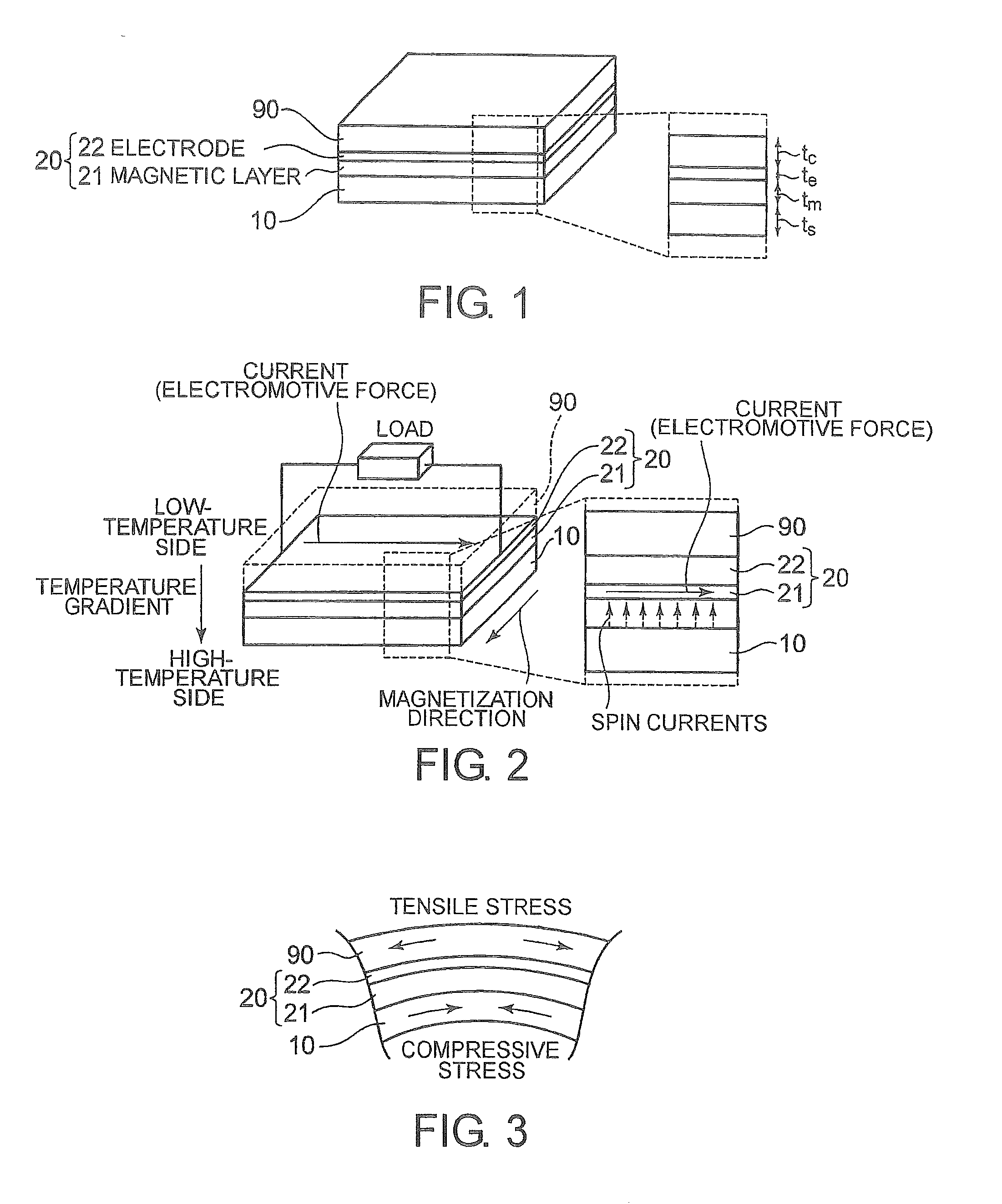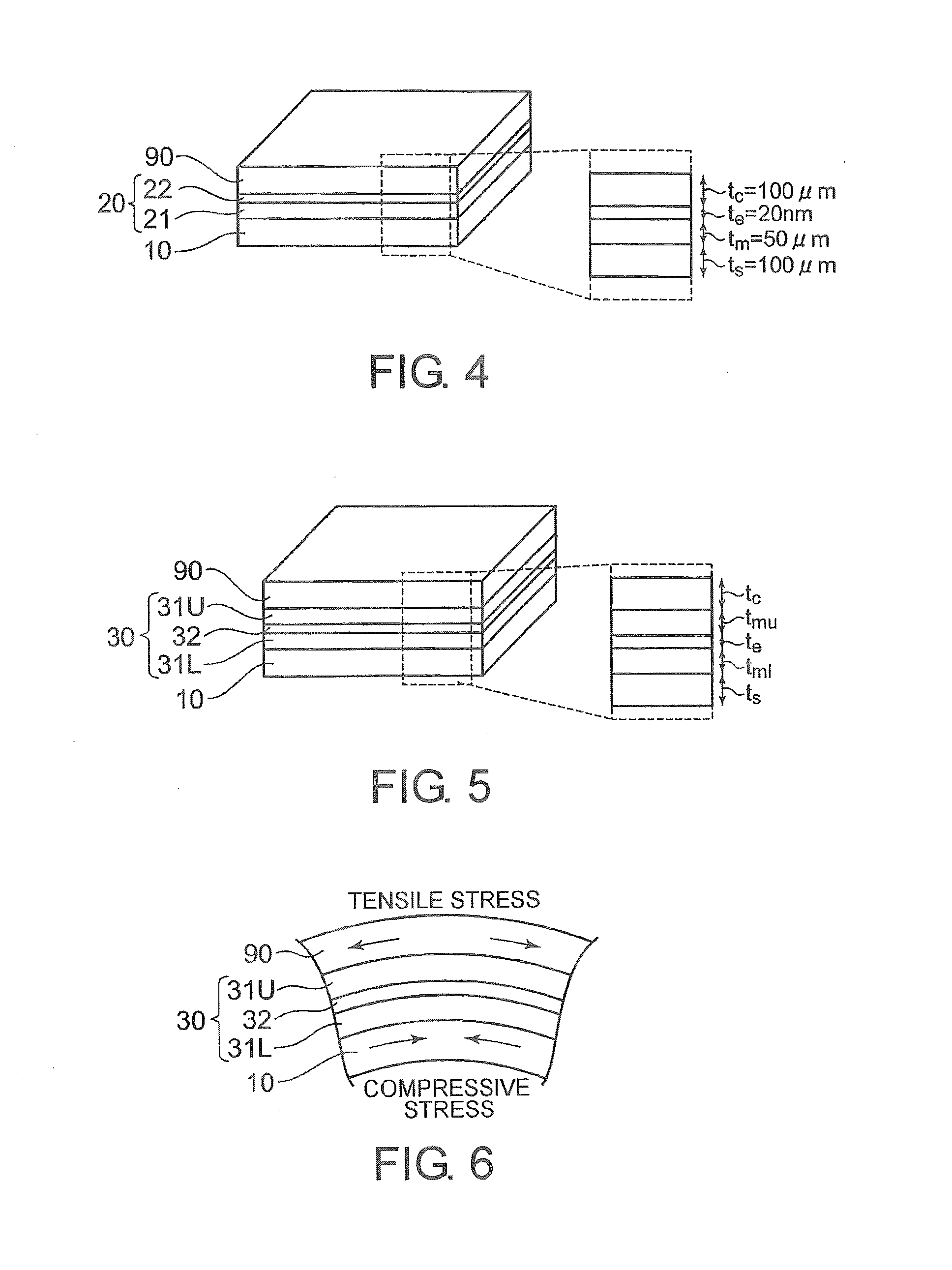Thermoelectric conversion apparatus
a technology of thermoelectric conversion apparatus and thermoelectric converter, which is applied in the manufacture/treatment of thermoelectric devices, electrical apparatus, thermoelectric devices, etc., can solve the problems of difficult for a thermoelectric conversion apparatus to adopt a flexible structure, curved surfaces of heat sources, and inconvenient use, so as to reduce the risk of breakage upon bending, reduce the risk of bending, and the effect of efficient stress absorption
- Summary
- Abstract
- Description
- Claims
- Application Information
AI Technical Summary
Benefits of technology
Problems solved by technology
Method used
Image
Examples
first embodiment
Configuration
[0048]Next, a first embodiment of the present invention will be described with reference to the drawings.
[0049]Referring to FIG. 1, which is a perspective view showing a thermoelectric conversion apparatus according to a first embodiment of the present invention, the thermoelectric conversion apparatus has a multilayer structure including a substrate 10 having flexibility, a power generation part 20 including a magnetic layer 21 and an electrode layer 22, and a cover layer 90.
[0050]A flexible substrate of an organic resin or the like is used as the substrate 10. A thermoplastic material such as polyolefin or vinyl resin may be used in a case where no intense heat is applied upon production of the device or in applications of thermoelectric conversion at low temperatures. However, in a case of using a process that requires heating, for example, upon deposition of the magnetic layer or the electrode or in applications of thermoelectric conversion at high temperatures of 1...
example 1
[0064]Referring to FIG. 4, in a thermoelectric conversion apparatus according to Example 1 of the present invention, a yttrium iron garnet (with composition of BiY2Fe5O12; hereinafter referred to as Bi:YIG) film in which Bi has been substituted for part of Y sites is used as the magnetic layer 21. Pt is used as the electrode layer 22. Here, the thickness of the magnetic layer 21 (Bi:YIG film) is set such that tm=50 μm, and the thickness of the electrode layer 22 (Pt electrode) is set such that te=20 nm. A polyimide substrate is used as the flexible substrate 10, and an acrylic resin is used as the cover layer 90. The thicknesses of the flexible substrate 10 and the cover layer 90 are set such that ts=tc=100 μm.
[0065]The magnetic layer 21, which is formed of Bi:YIG is deposited by an AD method. As a Bi:YIG material, Bi:YIG particulates having a diameter of 300 nm are used. Those Bi:YIG particulates are packed into an aerosol generation container, and the polyimide substrate 10 is fix...
second embodiment
[0068]Referring to FIG. 5, which shows a thermoelectric conversion apparatus according to a second embodiment of the present invention, the thermoelectric conversion apparatus includes magnetic layers of a first magnetic layer (lower magnetic layer) 31L formed on one layer surface of the electrode layer 32 and a second magnetic layer (upper magnetic layer) 31U formed on the other layer surface of the electrode layer 32.
[0069]The magnetic body, the electrode layer 32, the flexible substrate 10, the cover layer 90, and the like may employ the same materials as used in the first embodiment. As with the first embodiment, the thickness tc of the cover layer 90 is designed to be nearly equal to the thickness ts of the flexible substrate 10.
[0070]Specifically, the second embodiment differs from the first embodiment in that the power generation part 30 is formed by a multilayer structure of the upper magnetic layer 31U, the electrode layer 32, and the lower magnetic layer 31L. At that time,...
PUM
 Login to View More
Login to View More Abstract
Description
Claims
Application Information
 Login to View More
Login to View More - R&D
- Intellectual Property
- Life Sciences
- Materials
- Tech Scout
- Unparalleled Data Quality
- Higher Quality Content
- 60% Fewer Hallucinations
Browse by: Latest US Patents, China's latest patents, Technical Efficacy Thesaurus, Application Domain, Technology Topic, Popular Technical Reports.
© 2025 PatSnap. All rights reserved.Legal|Privacy policy|Modern Slavery Act Transparency Statement|Sitemap|About US| Contact US: help@patsnap.com



